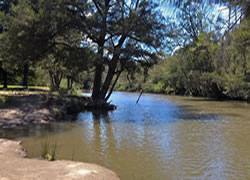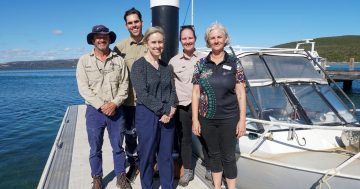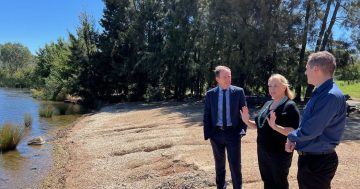 The Territory’s waterways have bounced back strongly following the 2019 bushfire season according to the latest report on the ACT’s water catchment health.
The Territory’s waterways have bounced back strongly following the 2019 bushfire season according to the latest report on the ACT’s water catchment health.
Welcoming the ACT Waterwatch Report, Minister for Water, Shane Rattenbury said the 2021 Catchment Health Indicator Program (CHIP) Report found that high rainfall had a positive impact on the Territory’s waterways, with 2021 the fifth wettest year on record.
“The 2021 CHIP Report, which outlines the findings and insights from 2,179 water quality, waterbug and riparian condition surveys, was conducted by over 200 volunteers, so I would like to extend my thanks to those involved for all that they do to protect our waterways,” Mr Rattenbury said.
“Nearly 230 sites were surveyed across Cooma, Ginninderra, Molonglo, Southern ACT and Yass,” he said.
“Out of 96 report cards, 49 results were rated excellent or good, 45 were rated as fair, and none were rated as degraded.”
Mr Rattenbury said as a result of high rainfall, phosphorus concentrations had declined since the impacts of the bushfires, “causing rivers to become clearer, with catchments like Hospital and Bogong creeks in Namadgi National Park bouncing back with marked improvements”.
The Minister said while the 2021 CHIP Report was overwhelmingly positive, not all the reaches showed improvement.
He said of the 18 reaches that showed declines, half were in urban wetlands and waterways, including Lake Tuggeranong and Lake Ginninderra, as well as some smaller wetlands.
“High nutrient levels in the form of nitrate and phosphorus were regularly detected washing off the surrounding suburbs, and waterways adjacent to development sites continued to experience high turbidity,” Mr Rattenbury said.
“This highlights the importance of us all doing our bit in suburbia to improve stormwater by actions such as cleaning up the leaves in our gutters,” he said.
Upper Murrumbidgee Facilitator at Waterwatch, Woo O’Reilly said the waterway improvements were not all a consequence of the wet weather, with ongoing efforts to reduce nutrient inflow, build new infrastructure and educate community members also having an impact.
The 137-page CHIP Report can be accessed at this PS News link.





